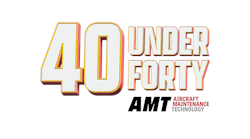Norms
Unwritten Rules that are Enforced by the "Group"
By Rich Komarniski
November 1998
A classic example of a killer norm was the norm of changing engines on a DC10 with a forklift. The practice saved about 12 hours in an engine change, but on May 25, 1979, it resulted in the crash of Flight 191 in Chicago with the loss of all 273 people on board. The number one engine and pylon assembly separated at a critical point during take off. This separation resulted from damage by improper maintenance procedures that lead to failure of the pylon structure.
The results of this norm were quite dramatic. I am sure we can think of others. But, how many times have we been caught out on the limb because we did not follow procedures?
Bad habits, which in many cases have become norms in our industry include:
• Moving an aircraft with no one riding the brake
• Moving an aircraft without wing walkers
• Assuming consumable fluids are in their right dispensers and containers
• Not using start and run up check lists
• Working from memory
Our attitude arises from the norms of the organizational group in which we belong to or associate with. A norm can be said to be a uniformity of attitude, opinion, feeling, or actions shared by two or more people.
A regulation is a formal norm that is written and dictates to us on how a situation is to be handled. A rule is a description on how the task should be done and also governs our attitude towards the task. A habit is typically a way of dealing with a situation almost automatically. So a norm is something that was established in the past that continues to influence our current judgment and behavior.
How many times when we have started with a new company have we seen their unwritten procedures to be in conflict with our own standards? It takes a lot of guts to stand up for your beliefs and follow proper procedures than to bow to the norm of the organization. If we approach the situation properly, with pride and confidence, the rest of the employees may realize their shortcomings in the adoption of a particular norm. Deep down, everyone wants to do the job right but without realizing it may have lowered their standards.
Because you are a professional, you have standards to maintain. A good safety and systems audit usually cleans up the unwritten rules that have been formed. It is only human nature to find short cuts. It is tough being human — we keep setting ourselves up for more problems.
What can we do? Here are a few simple ways to combat the development and or existence of organizational norms.
• Look for the norms where you live and work
• If the habit is only yours, and it is negative, then work on removing it before it becomes a group norm
• Work to accentuate the positive and eliminate the negative as a group
• Always work in accordance with the approved manuals and paperwork
• Be aware that "norms" do not make it right Positive norms do exist. Two positive norms are identified below.
1. Double check our work — whether it is required or not
2. Read everything we sign for — take pride in what our signature represents
The existence of a norm and the attitudes that flow from it are very significant. They can lead to promoting productivity and safety or restricting output. They can also assist in making decisions promptly or stifle opportunities, resulting in delays and creating incidents.





